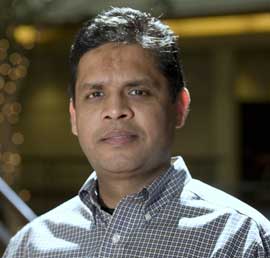
Integrating analog and digital signals pose a number of challenges owing to the difference in the nature of their origin. Easing this conversation between analog and digital will allow designers to reduce time, directly address challenges and conduct verification in a real-time basis. Tools like MATLAB & Simulink provide engineers with this capability, thus allowing them to work in a smarter and efficient manner. Dr. Arun of MathWorks discusses more about the integration advantages and related challenges.
What is analog and digital signal integration? Can we call it as mixed signal integration?
Analog and digital signals and circuits have co-existed for many decades in electronic designs, and together, they represent mixed-signal systems. Integration however, is a different matter – particularly as it applies to integrated modelling, design, simulation, implementation, and verification – as it has proven to be elusive and difficult to achieve.
What are the challenges inherent in combining analog and digital circuits? And why there is need to look at these challenges?
Analog and digital systems have traditionally been designed and verified in distinctly different and isolated methodologies. Even today, these systems come together for the first time during system-level verification – often with unpredicted and detrimental results. Digital system design has successfully crossed the boundary from low-level circuit design to top-down design, and has benefited from advances in early verification, design exploration, and automatic code generation. In contrast, analog systems continue to be developed in circuit level environments which are notoriously slow and preclude exhaustive simulations and design explorations. Consequently when engineers design, verify and validate mixed-signal systems, they detect and identify bugs and design flaws very late in the design cycle and this leads to project/product delays and quality issues.
What are the benefits of this integration to electronics system design?
Pioneers such as STARC in Japan have partnered with Model-Based Design leaders such as MathWorks and EDA majors such as Cadence to address the issue of isolated analog and digital designs. Together, they developed an integrated top-down design and verification methodology called STARCAD-AMS for analog and mixed-signal systems and certified it in 2012. The fundamental benefit of this integrated workflow is a significant reduction – typically 50% or more – in the time and engineering resources needed for the design and verification of mixed-signal systems.
How MathWorks takes part to address these challenges? What are your supporting tools for this?
Many of the products and technologies that enable Model-Based Design have proven to be ideal in addressing the challenge of efficient design and verification of analog and mixed-signal systems. Simulink has over 25 years of legacy of simulating continuous, discrete, and mixed-mode systems with fixed- and variable-step solvers. It provides a block-diagram based design environment which is very familiar to analog engineers that currently do schematic circuit designs.
After modeling and validating the mixed-signal system designs, engineers can automatically generate synthesizable VHDL or Verilog for the digital components using HDL Coder. They can also export the analog components using C code wrapped with DPI-C System Verilog. These flows are proven and fully integrated with the standard EDA tools from Synopsys, Cadence, and Mentor Graphics, and have been adopted by major electronics and semiconductor companies worldwide.






